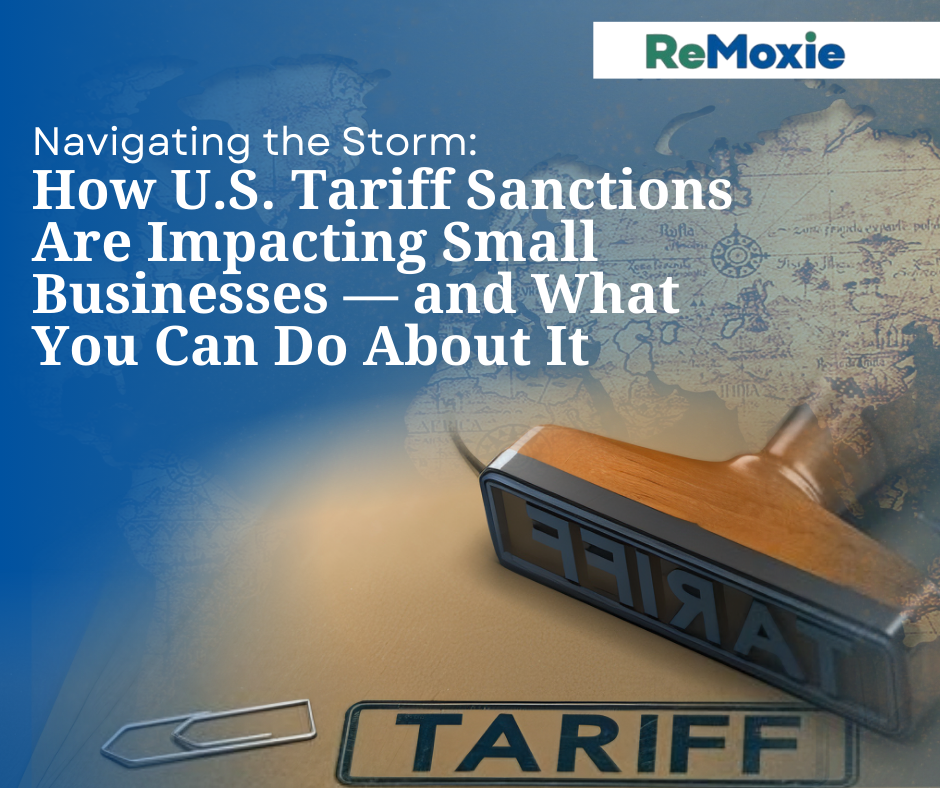Navigating the Storm: How U.S. Tariff Sanctions Are Impacting Small Businesses — and What You Can Do About It

What's Happening with U.S. Tariff Sanctions in 2025?
The Executive Order 14195 was put in effect February 4, 2025, daunting a 10% tariff on all Chinese imports. From then on, the United States has ramped up its use of tariff sanctions, placing new pressure on global trade. As part of an effort to correct trade imbalances and promote domestic manufacturing, the government has implemented a blanket 10% tariff on all imports, with certain countries like Vietnam facing tariffs as high as 46%. These moves are causing serious ripples across industries—especially for, small business owners who rely on global supply chains.
How Do Tariff Sanctions Affect Small Business Owners?
For small business owners in retail, fashion, e-commerce, tech, and manufacturing, these tariffs are more than just a headline—they’re a real financial strain. How? Here are just a few of the effects in the change of tariff sanctions:
Increased Operational Costs
Imported goods and raw materials are now more expensive. This is forcing small businesses to choose between shrinking profit margins or raising prices for consumers. This may also lead to cost-saving management decisions that may not only involve the cost of raw materials but also affect the workforce.
Supply Chain Disruptions
Industries like fashion and electronics are especially impacted. If big brands such as Nike, Under Armour, and Gap have experienced stock price drops (20–30%) as they scramble to reorganize supply chains, what more for us, Small Business Owners.
Competitive Disadvantage
Domestic competitors who source locally may have an edge in pricing. But smaller import-reliant businesses are at risk of losing market share.
Slower Growth & Expansion
Tariffs create uncertainty. It is making it harder for Small Businesses to forecast, budget, and scale confidently. The room to navigate our businesses for expansion has now become smaller. We now must rethink our previous plans for scaling to accommodate this change.
What Can Small Business Owners Do to Stay Resilient?
Don’t panic—adaptation is your superpower. Here are strategies to help you weather the tariff storm:
✅ Reevaluate Your Supply Chain
Start sourcing materials and products from tariff-exempt countries or domestic suppliers. Flexibility in sourcing can reduce costs and delays. This is where your network connections will come in handy and will need to expand.
✅ Communicate with Your Customers
If you need to raise prices slightly, explain why. Many consumers are aware of global challenges and may appreciate your transparency. Loyal customers will appreciate the honesty. Remember, we are all in the same boat.
✅ Focus on Value-Added Services
If product margins are tight, increase your business value by offering better customer service, packaging, customizations, or loyalty programs. Continue building the foundation of a great customer relationship.
✅ Automate to Cut Costs
Use affordable tools and virtual assistants to streamline your operations. A brilliant management move is delegating administrative, repetitive, & tasking jobs to virtual assistants can balance out import increases.
✅ Stay Informed
Subscribe to reliable trade and economic newsletters. This will keep you well informed and will not get you caught off-guard by policy changes. Flexibility is easier when you're prepared.
Sources:
- https://thehill.com/homenews/administration/5228738-trump-imposing-reciprocal-tariffs/
- https://finance.yahoo.com/news/live/trump-tariffs-live-updates-trump-raises-rate-on-china-to-125-pauses-reciprocal-tariffs-on-other-countries-191201868.html
- https://sourcingjournal.com/topics/trade/vietnam-tariffs-currency-manipulation-biden-ustr-commerce-department-aafa-289866/
- https://sourcingjournal.com/topics/sourcing/vietnam-negotiations-president-trump-tariffs-1234743226/
- https://www.reuters.com/business/retail-consumer/sporting-goods-makers-adidas-puma-slump-after-trump-announces-tariffs-2025-04-03/
ReMoxie Blog







